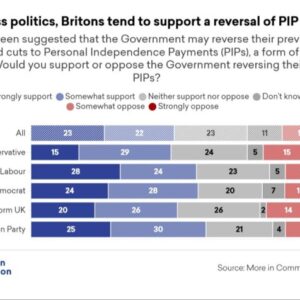Under Armour announced a broad restructuring plan on Thursday as it said sales in its largest market, North America, plunged 10% and predicted the trend will get worse throughout its current fiscal year.
The athletic apparel retailer also saw profits sink by more than 96% during its fiscal fourth quarter, compared with the year-ago period.
It’s unclear how many employees Under Armour will lay off as part of the restructuring, but the plan is expected to cost between $70 million and $90 million, a portion of which will be used for employee severance and benefits costs. The company declined to share more information with CNBC about its restructuring.
The company’s shares initially plunged double digits in pre-market trading after its earnings report was released, but later rebounded after its earnings call with Wall Street analysts. Shares closed more than 1% lower.
Here’s how the athletic apparel retailer did in its fiscal fourth quarter compared with what Wall Street was anticipating, based on a survey of analysts by LSEG:
- Earnings per share: 11 cents adjusted vs. 8 cents expected
- Revenue: $1.33 billion vs. $1.33 billion expected
The company’s reported net income for the three-month period that ended March 31 was $6.6 million, or 2 cents per share, compared with $170.6 million, or 38 cents per share, a year earlier. Excluding one-time items, the company reported earnings of 11 cents per share.
Sales dropped to $1.33 billion, down about 5% from $1.4 billion a year earlier.
During the quarter, sales in North America declined 10% to $772 million, worse than the $780 million that analysts had expected, according to StreetAccount.
Under Armour said it expects sales to continue to worsen in North America. The company anticipates they will drop between 15% and 17% in its current fiscal year.
“Due to a confluence of factors, including lower wholesale channel demand and inconsistent execution across our business, we are seizing this critical moment to make proactive decisions to build a premium positioning for our brand, which will pressure our top and bottom line in the near term,” founder and CEO Kevin Plank said in a statement.
“Over the next 18 months, there is a significant opportunity to reconstitute Under Armour’s brand strength through achieving more, by doing less and focusing on our core fundamentals,” he added.
Across Under Armour’s business, the company is expecting revenue to be down “at a low-double-digit percentage rate” in its current fiscal year, while analysts had expected sales to grow by 2.1%, according to LSEG.
The company is planning to cut down on promotions and discounting, which it expects will lead its gross margin to rise between 0.75 and 1 percentage point for the fiscal year.
It’s expecting diluted earnings per share to be between 2 cents and 5 cents and adjusted diluted earnings per share to be between 18 cents and 21 cents for the year. Analysts had expected earnings per share of 52 cents, according to LSEG.
Under Armour’s rough quarter comes about two months after the retailer announced former Marriott executive Stephanie Linnartz would be stepping down from her role as CEO after barely a year on the job and Plank would once again take the helm of the company he founded in 1996.
Linnartz was the second CEO the company has cycled through in less than two years.
During a call with analysts, Plank was blunt about where things had gone wrong for Under Armour. He pointed to inconsistent leadership as one of the primary issues.
“With several CEOs and heads of products, marketing and North America over the past half decade, ongoing turnover of critical leadership has been central to our inability to stay agile and decisive,” said Plank.
Linnartz was hired on a bet that her experience building out Marriott’s renowned Bonvoy loyalty program and driving digital revenue for the hotel giant would offset her lack of experience in the retail industry. Before her departure, she managed to overhaul Under Armour’s C-suite and build out its loyalty program. She was attempting to pivot the brand’s assortment to a more athleisure-focused offering that had more stylish options for women, who tend to spend more on clothes and shoes than men do.
Now Plank is looking to undo some of that work. He told analysts that the company had “taken our eyes off” its core men’s apparel business, which has “significantly impacted” the brand’s perception and led it to become “more promotional and commoditized.”
“We will rectify this,” said Plank. “This focus does not mean that we are deprioritizing our footwear or women’s business per se but from a sequencing perspective, men’s apparel will be our highest priority.”
As Plank tries to reset the business, he said Under Armour plans to reduce its style counts by roughly 25% over the next 18 months and cut down the amount of time it takes to get a product from an idea to a showroom floor. He aims to streamline the process so it’ll only take between 6 and12 months instead of the 18 months it currently takes — a system he called “just plain uncompetitive in the 2024 landscape.”
The full restructuring will focus on streamlining Under Armour’s overall business, reducing silos and ensuring that every staffer’s work is directly contributing to its primary goal: “Selling more shirts and shoes.”
“We are simply doing too much stuff. There are too many products, too many initiatives, too much of too much,” said Plank. “To reconstitute this brand, we must be highly focused and prioritize what needs to get done so that our teams know exactly what to do with a clear definition of success.”
Read the full earnings release here.




